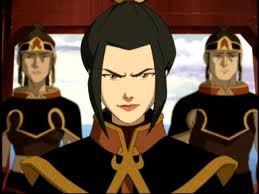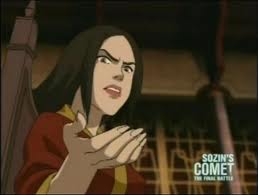!!Series finale spoilers ahead!!
If you haven’t already heard, The Legend of Korra ended this past Friday, bringing an end to the Avatar: The Last Airbender sequel and generating a wave of chatter online. After four seasons and 52 episodes, the series hasn’t always hit the right notes. One of the elements of The Legend of Korra that I had voiced concerns about in the past is the show’s handling of romances. The series’ first two seasons fell into many of the deadly traps of fictional romances, from convoluted love triangle drama to drawing comedy from a certain male character’s suffering in a relationship with a controlling woman. But how the series ultimately ties up its relationships leaves plenty to discuss.
In seasons three and four, we saw those aforementioned problematic relationships fizzle out, leaving most of Korra’s gang single. In their place, the show focused on the steady maturation of Korra and her friends, and the creation of bonds much stronger than the rather superficial romance-of-the-week of the previous two seasons. In a way, the most generic relationship drama–the infamous love triangle between Korra, Asami, and Mako–turned out to be the most innovative, namely because the romance drama got ditched.
By turning to a scenario in which neither girl ends up with Mako, creators Bryan Konietzko and Mike DiMartino shed a restrictive, not to mention overused, element of storytelling that ends with someone winning the love interest’s heart and thus, winning happiness. Instead, Korra offers its viewers a revision that doesn’t disregard love, but simply adjusts our expectations of what kind of love really matters. Take Mako and Korra for example. They’re romance may have crashed and burned, but they become friends who have each other’s backs. This is their happy ending. They’ve moved passed their passionate adolescences to find more stable relationships that don’t necessarily register with the standard comedic ending. It’s not an unheard of conclusion for the lead male and female characters, but one that seems much more natural than their previous on-and-off romance. Bonds of friendship and family prove sturdier than anything in Korra. Even Baatar, Jr. discovers the love of his family to be stronger than his romance with this season’s antagonist, Kuvira!
Of course, we did get a good dose of classic comedic endings as well. You can’t get more classic than ending with a wedding, and that’s exactly what The Legend of Korra gave us as a conclusion for wacky genius duo Varrick and Zhu Li. Yet even more standard relationships like this one ended up putting a heavy emphasis on partnership above anything else. While Zhu Li had been colored as Varrick’s assistant in seasons two and three, the show made a notable effort to depict Zhu Li asserting her equality and Varrick beginning to recognize Zhu Li as a partner in both their professional and personal relationships in season four. While played for laughs, their marriage vows raise some doubt as to how much Varrick has actually changed how he expects his relationship with Zhu Li to work, but perhaps this brief moment is a good way of acknowledging that change doesn’t happen so easily.
My favorite change, however, is the relationship that bloomed between lead women Korra and Asami. Konietzko and DiMartino made a smart choice earlier in the series by making Asami and Korra friends despite their mutual love for Mako, avoiding much of the typical underhanded fighting between female rivals-in-love. This relationship reaches new heights in this last season, as the girls grow into women who depend on each other more than anyone else, supporting each other during the most turbulent periods.
With a final shot of Korra and Asami holding hands and looking into each other’s eyes as they prepare to embark on a journey at the end, Korra creators have pushed the envelope one last time in the show. There’s a debate about whether this final shot sends a message of prevailing female friendship over romance or cements Korra and Asami’s relationship as more than friendship, but lovers. (UPDATE: Korra creators confirmed that they are, in fact, lovers. Thanks, Megh!) Whether you see them as just friends or as a couple, you have to admit that The Legend of Korra leaves its viewers with a wonderful break from standard stories. Not only do the leading women not have to end up with the guy to find happiness, but they each find their most important companion to be another woman. Their relationship is defined as a bond much stronger than a fairytale romance between a prince and a princess. It’s one of support, love, and partnership between women.
The Legend of Korra ends with a bang just as it began with one by sticking with its muscular, kick-butt heroine when doubt was expressed about the appeal of an action show with a female protagonist. Korra marks herself as a heroine never to be tied down by standard storytelling, leaving gender stereotypes and romance cliches far behind in this last season.









